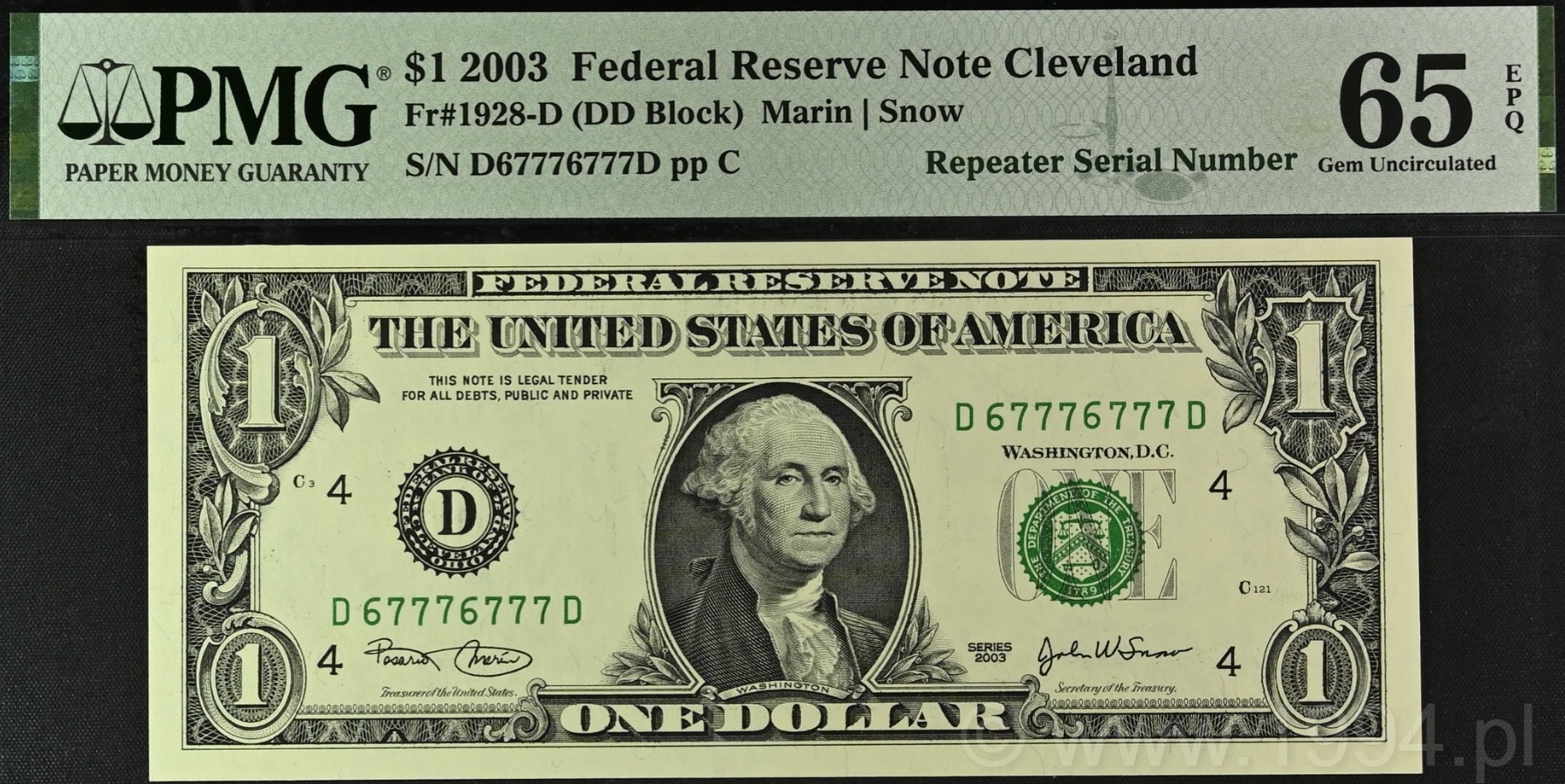Description and research notes
This 2003 1 Dollar Federal Reserve Note from the Cleveland District (Friedberg 1928-D, DD Block) features an exceptional Repeater Serial Number D67776777D, forming a rhythmic sequence that mirrors the structure of mathematical repetition within U.S. serial numbering systems. The pattern '67776777' creates a cascading numeric flow, with a repeating '67' prefix and triple '777' finale—one of the most aesthetically balanced repeater configurations possible.
Repeater serial numbers are a popular subset of fancy notes, defined by recurring digit groupings or mirrored patterns that occur by pure statistical chance during numbering. The Bureau of Engraving and Printing does not control these outcomes; they arise naturally in the numbering press cycle, making high-grade examples an accidental rarity. For collectors, such notes combine precision mechanics with the unpredictability of probability, turning ordinary currency into an exercise in mathematical beauty.
This note carries the signatures of Marin and Snow and was printed at the Washington D.C. facility for the Cleveland (D) district. The design retains the enduring layout of the small-size $1 note introduced in 1929—George Washington’s portrait framed by deep black intaglio engraving, complemented by green Treasury and Federal Reserve seals.
Certified PMG 65 EPQ Gem Uncirculated, this example displays perfect margins, deep color saturation, and original paper quality. The EPQ (Exceptional Paper Quality) designation confirms full originality and embossing, critical indicators of a note untouched by flattening or conservation. For fancy serials, such originality heightens desirability, ensuring both aesthetic appeal and long-term market recognition.
From a technical standpoint, the chance of producing an exact 8-digit repeater sequence of this type is roughly one in 10,000—a statistical improbability that underscores its fascination. Within the 2003 Cleveland print runs, surviving Gem Uncirculated examples are extremely limited, and pairing such condition with a bold Repeater Serial Number elevates this note to a true highlight within the modern fancy-serial niche.
A superb study piece illustrating the interplay of random number generation, printing precision, and collector psychology, this 2003 Cleveland Repeater embodies why fancy serial notes are among the most mathematically engaging artifacts in U.S. paper money collecting.
